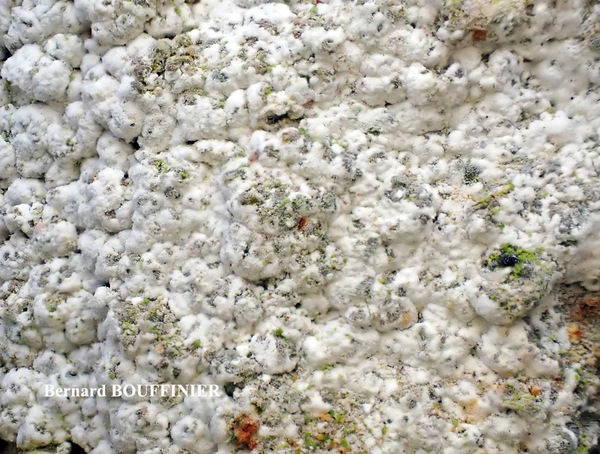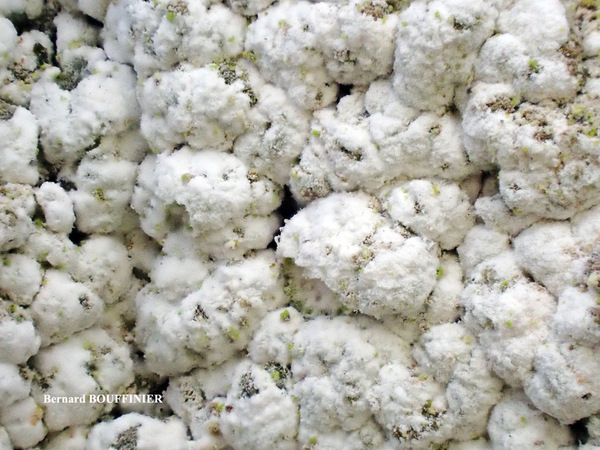Sporodophoron cretaceum (Hue) Ertz & Frisch
in Frisch & al., Lichenologist, 47: 248, 2015. Basionym: Crocynia cretacea Hue - Bull. Soc. Bot. France, 73: 347, 1924.
Synonyms: Schismatomma cretaceum (Hue) J.R. Laundon; Schismatomma virgineum D. Hawksw. & P. James
Distribution: C - Sar (Zedda 2002, Cossu 2013).
Description: Thallus crustose, episubstratic, up to 0.9 mm thick, ecorticate and farinose wide-spreading, at first whitish grey, then chalky-white, continuous to rimose, rarely areolate with flat, angular, 0.5-2 (-3) mm wide areoles, without a distinct prothallus. Medulla white, I+ blue, K/I+ blue, the hyphae covered with small colourless crystals dissolving in K (polarized light). Apothecia extremely rare, arthonioid, emarginate, with a white-pruinose disc. Epithecium dark grey, obscured by crystals; hymenium colourless, I+ reddish, K/I+ blue; hypothecium thin, colourless, I+ reddish, K/I+ blue. Asci 8-spored. Ascospores 3-4 septate, hyaline, with a distinctly enlarged upper cell, 15-25 x 7-9 μm. Sporodochia whitish, at first well-delimited, then becoming irregular and eroded, finally covering most of the surface. Conidia formed from c. 2 μm thick, colourless hyphae, disintegrating into 1-6-septate fragments of irregular shape, often with a submuriform appearance, rounded, angular or ellipsoid, more or less constricted at septa, (10-)11.5-16.5(-20) x (6-)7.5-11(-14) μm, the individual cells rounded to short-cylindrical, the walls colourless, covered with pale granular crystals. Photobiont trentepohlioid. Spot tests K+ yellow, C-, KC-, P-, UV+ pale grey-orange. Chemistry: 2'-O-methylperlatolic acid, lepraric high unknown, and up to four other accessory compounds.Note: a species with a mainly western European distribution, almost always sterile, usually with sporodochia (a fertile specimen was descroibed from the Ukraine by Khodosovtsev & al. 2024), which grows on the dry sides of old isolated trees below the montane belt. It is included as “Critically Endangered” in the Italian red list of epiphytic lichens (Nascimbene & al. 2013c).
Growth form: Crustose
Substrata: bark
Photobiont: Trentepohlia
Reproductive strategy: mainly asexual, by conidia and thalloconidia
Most common in areas with a humid-warm climate (e.g. most of Tyrrenian Italy)
Commonnes-rarity: (info)
Alpine belt: absent
Subalpine belt: absent
Oromediterranean belt: absent
Montane belt: absent
Submediterranean belt: absent
Padanian area: absent
Humid submediterranean belt: extremely rare
Humid mediterranean belt: extremely rare
Dry mediterranean belt: absent
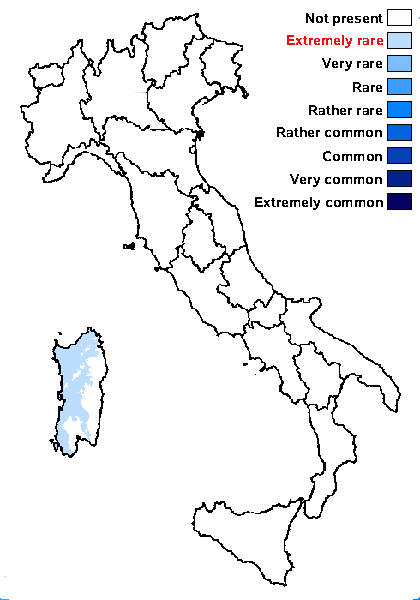
Predictive model
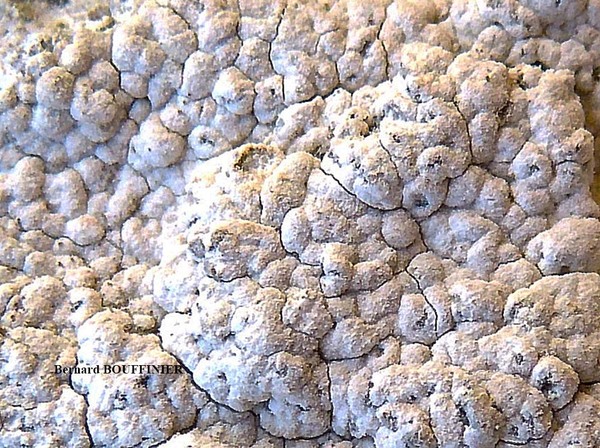
Bernard Bouffinier - Source: http://www.lichensmaritimes.org/index.php?task=fiche&lichen=661&lang=en
France, Le Relecq
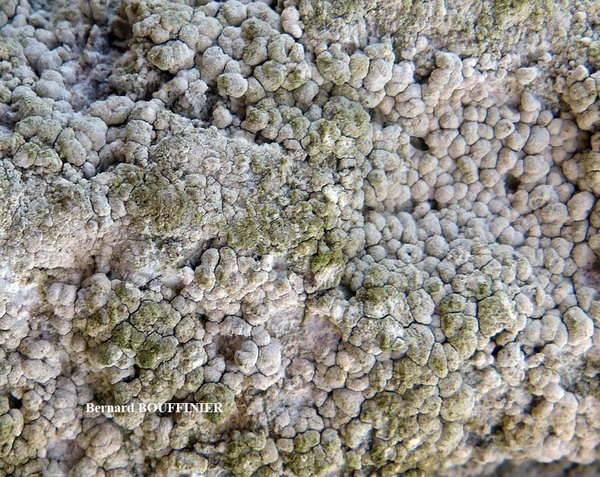
Bernard Bouffinier - Source: http://www.lichensmaritimes.org/index.php?task=fiche&lichen=661&lang=en
France, Le Relecq
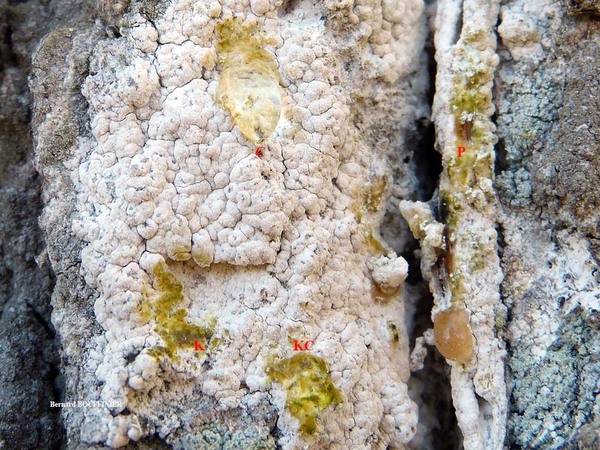
Bernard Bouffinier - Source: http://www.lichensmaritimes.org/index.php?task=fiche&lichen=661&lang=en
France, Le Relecq
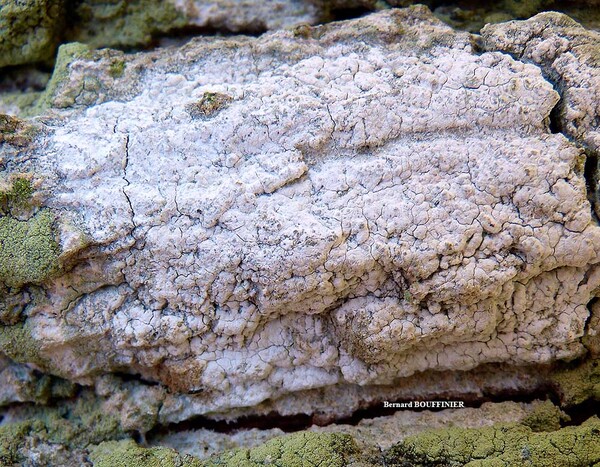
Bernard Bouffinier - Source: http://www.lichensmaritimes.org/index.php?task=fiche&lichen=661&lang=en
France, Le Relecq

Bernard Bouffinier - Source: http://www.lichensmaritimes.org/index.php?task=fiche&lichen=661&lang=en
France, Le Relecq
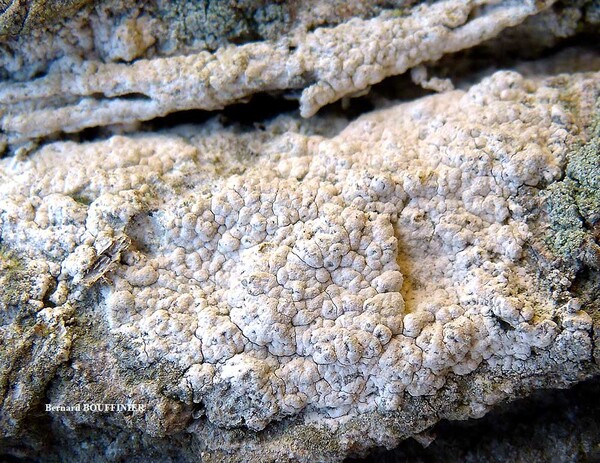
Bernard Bouffinier - Source: http://www.lichensmaritimes.org/index.php?task=fiche&lichen=661&lang=en
France, Le Relecq
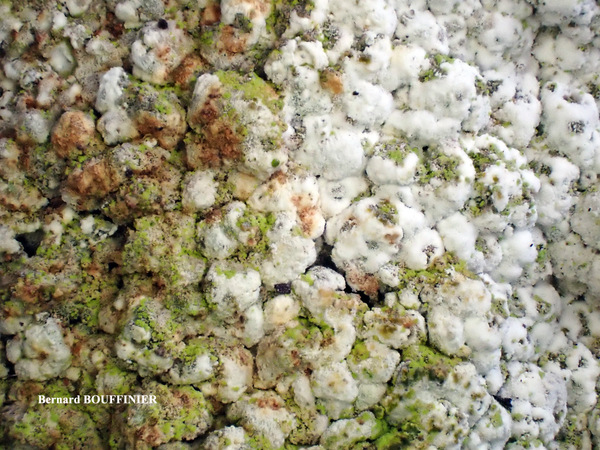
Bernard Bouffinier - Source: http://www.lichensmaritimes.org/index.php?task=fiche&lichen=661&lang=en
France, Le Relecq
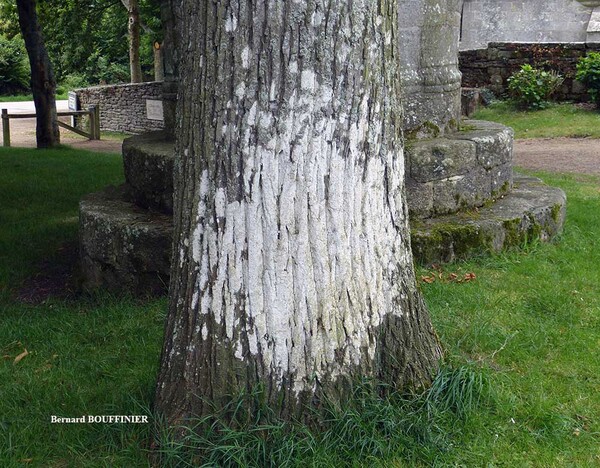
Bernard Bouffinier - Source: http://www.lichensmaritimes.org/index.php?task=fiche&lichen=661&lang=en
France, Poullan-sur-mer
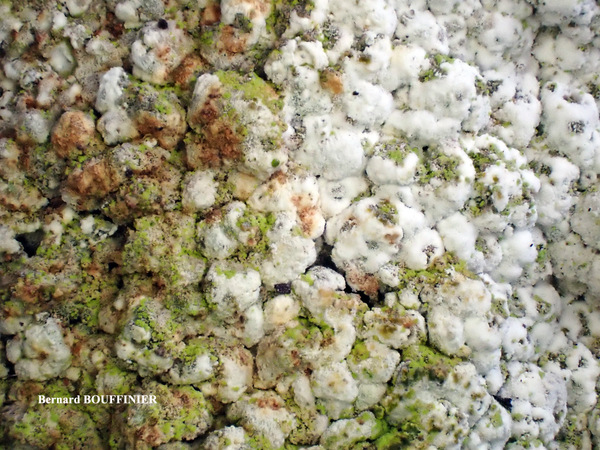
Bernard Bouffinier - Source: http://www.lichensmaritimes.org/index.php?task=fiche&lichen=661&lang=en
France, Kergoat
Growth form: Crustose
Substrata: bark
Photobiont: Trentepohlia
Reproductive strategy: mainly asexual, by conidia and thalloconidia
Most common in areas with a humid-warm climate (e.g. most of Tyrrenian Italy)
Commonnes-rarity: (info)
Alpine belt: absent
Subalpine belt: absent
Oromediterranean belt: absent
Montane belt: absent
Submediterranean belt: absent
Padanian area: absent
Humid submediterranean belt: extremely rare
Humid mediterranean belt: extremely rare
Dry mediterranean belt: absent

Predictive model

Bernard Bouffinier - Source: http://www.lichensmaritimes.org/index.php?task=fiche&lichen=661&lang=en
France, Le Relecq

Bernard Bouffinier - Source: http://www.lichensmaritimes.org/index.php?task=fiche&lichen=661&lang=en
France, Le Relecq

Bernard Bouffinier - Source: http://www.lichensmaritimes.org/index.php?task=fiche&lichen=661&lang=en
France, Le Relecq

Bernard Bouffinier - Source: http://www.lichensmaritimes.org/index.php?task=fiche&lichen=661&lang=en
France, Le Relecq

Bernard Bouffinier - Source: http://www.lichensmaritimes.org/index.php?task=fiche&lichen=661&lang=en
France, Le Relecq

Bernard Bouffinier - Source: http://www.lichensmaritimes.org/index.php?task=fiche&lichen=661&lang=en
France, Le Relecq

Bernard Bouffinier - Source: http://www.lichensmaritimes.org/index.php?task=fiche&lichen=661&lang=en
France, Le Relecq

Bernard Bouffinier - Source: http://www.lichensmaritimes.org/index.php?task=fiche&lichen=661&lang=en
France, Poullan-sur-mer

 INDEX FUNGORUM
INDEX FUNGORUM
 GBIF
GBIF
